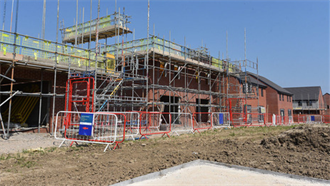At a time of falling property values, high inflation and ongoing economic uncertainty, how are real estate companies approaching their ESG goals? In an interview with PropertyEU, Abigail Dean, global head of strategic insights at Nuveen Real Estate, shares her views on where the sustainability agenda is headed.
Q&A Nuveen Real Estate: ‘Repricing is a chance to speed up net-zero refurbs’
- In Magazine highlights
- 15:25, 07 March 2023
Premium subscriber content – please log in to read more or take a free trial.
Events
Latest news
Best read stories
-

Investis expands Swiss resi portfolio with €149m acquisition
- 20-Dec-2024
Swiss real estate group Investis has boosted its real estate holdings with the CHF 139 mln (€149 mln) purchase of prime residential properties in Vaud canton.
-
- 20-Dec-2024
Deka snaps up Paris office building for €89m

-

-
- 23-Dec-2024
Indurent gets green light for Staffordshire shed

-
- 23-Dec-2024
NBIM snaps up 80% stake in Trinity office tower






























